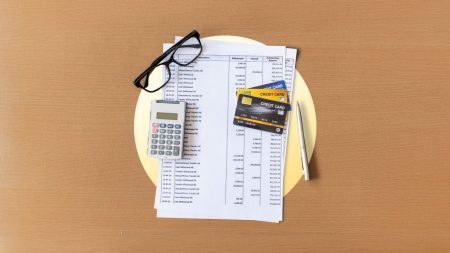Christina Zelow Lundquist/ Getty Images; Illustration by Austin Courregé/Bankrate
Key takeaways
- A cash-out refinance replaces your current mortgage with a new, bigger mortgage that converts some of your home’s equity to cash.
- The terms of your refinanced mortgage might significantly differ from your original loan, including a new rate or longer or shorter loan term.
- You can do a cash-out refinance for any reason, but most borrowers do it to pay for large-scale home improvements.
Paying down your mortgage helps build equity in your home, but you don’t have to wait until you completely repay your loan — or sell the property outright — to access that equity. Instead, you can convert the equity you have into ready money, and continue paying off your mortgage, with a cash-out refinance.
What is a cash-out refinance?
A cash-out refinance is the process of replacing your current mortgage with a new, larger mortgage for the remaining balance of the original loan plus cash from your home’s equity. You’ll receive the cash in a lump-sum payment. You can use this money for any purpose, including home remodeling, debt consolidation, college tuition and other financial needs.
How does a cash-out refinance work?
A cash-out refinance works similar to that of a regular, or rate-and-term, refinance: You’ll replace your existing mortgage with a new one at a different interest rate, and sometimes a different term.The difference is that you’ll get a new loan for a larger amount, rather than the remaining balance of your original loan. That larger amount includes cash withdrawn from your home’s equity.
Cash-out refinancing is beneficial if you can reduce the interest rate on your primary mortgage and make good use of the funds you take out.
— Greg McBride, CFA , chief financial analyst for Bankrate
Many borrowers use the cash-out proceeds for expenses such as:
- Home improvement projects: You could use a cash-out refinance to remodel your kitchen or add an addition, for example.
- High-interest debt consolidation: Refinance rates tend to be lower compared to other forms of debt like credit cards. You can use a cash-out refinance to pay off these debts and pay the loan back with one, lower-cost monthly payment instead.
- College education: Tapping home equity to pay for college can make sense if the refinance rate is lower than the rate for a student loan.
- Investments: Some people purchase an investment property using a cash-out refinance. Others use the funds for goals like starting a business.
This type of refinancing is one of the cheaper ways to pay for large expenses, in part because the collateral involved — your home — translates to lower risk for lenders. In a pinch, you’re far more likely to pay your mortgage than your credit card bill, for instance.
How much cash can you get with a cash-out refinance?
If you’re doing a conventional cash-out refinance — the most common kind — you can borrow up to 80 percent of your home’s value. However, this threshold varies depending on the property type. For a multifamily home, for example, you often can only borrow up to 75 percent.For an FHA cash-out refinance, you might be eligible to borrow up to 80 percent of the value of your home, as well. With a VA loan cash-out, you could qualify to tap all of your home’s equity.
Cash-out refinance example
Let’s say you still owe $100,000 on your home, and it’s currently worth $400,000. That means you have $300,000 in equity. For a cash-out refinance, you’re typically required to maintain at least 20 percent equity in the home. In this example, that means you’d need to keep $80,000 intact, leaving you with up to $220,000 to take out.
Cash-out refinance requirements
Just as you did with your original mortgage, you’ll need to meet qualifying criteria to be eligible for a cash-out refinance. For a conventional loan, these requirements include:
- Credit score: You’ll generally need a credit score of at least 620 to qualify. Of course, a higher credit score gets you a more competitive interest rate.
- Debt-to-income (DTI) ratio: This ratio measures your monthly debt payments — including the new refinanced mortgage payment — against your gross monthly income. In many cases, lenders cap this at 43 percent.
- Equity: Most lenders require you to have at least 20 percent home equity in order to take cash out.
- Seasoning: Conventional cash-out refis come with a six-month seasoning requirement.
Pros and cons of cash-out refinancing
Pros
- You can lower your interest rate: This is the most common reason borrowers refinance.
- Your cost to borrow could be lower: Cash-out refinances often have lower rates than home equity loans, personal loans and credit cards.
- You can improve your credit: If you use your equity to consolidate debt, your credit utilization ratio (the amount of your outstanding balances compared to your overall credit limits) could drop. This can help boost your credit score.
- You could take advantage of tax deductions: If you use the cashed-out funds for home improvements and itemize your taxes, you could deduct the interest.
Cons
- Your interest rate might go up: If interest rates have risen substantially since your original mortgage, you’ll pay more on your new loan, even with good credit. Since the new mortgage is bigger, you’ll be charged more in interest too.
- You could be prolonging repayments: If you’re using a cash-out refi to consolidate debt, make sure you’re not prolonging over decades repayments you could have paid off much sooner and at a lower total cost otherwise. “Keep in mind that the repayment on whatever cash you take out is being spread over 30 years, so paying off higher-cost credit card debt with a cash-out refinance may not yield the savings you’re thinking,” says Greg McBride, chief financial analyst for Bankrate. “Using the cash out for home improvements is a more prudent use.”
- You have a greater risk of losing your home: A cash-out refinance increases your mortgage balance. Failing to repay the loan means you could wind up losing it to foreclosure. Don’t take out more cash than you need, and make sure you’re using it for a purpose that will improve your finances instead of worsening your situation.
Alternatives to a cash-out refinance
If a cash-out refinance doesn’t work for you, here are some alternatives to consider.
- HELOC: A home equity line of credit, or HELOC, allows you to borrow money when you need to with a revolving line of credit, similar to a credit card. HELOC interest rates are variable, fluctuating with the prime rate.
- Home equity loan: A home equity loan is a second mortgage that provides a lump-sum payment. Unlike a HELOC, home equity loans have a fixed-rate and you start repaying them immediately.
- Personal loan: A personal loan is a shorter-term loan that provides funds for virtually any purpose. Personal loan interest rates vary widely and can depend on your credit, but the money borrowed is typically repaid with a monthly payment, like a mortgage. Unlike a refinance, they often require less paperwork and can sometimes be approved and funded the same day you apply.
- Reverse mortgage: A reverse mortgage allows homeowners aged 62 and up to withdraw cash from their homes. The balance doesn’t have to be repaid as long as the borrower lives in and maintains the home and pays their property taxes and homeowners insurance.
FAQ
Read the full article here










